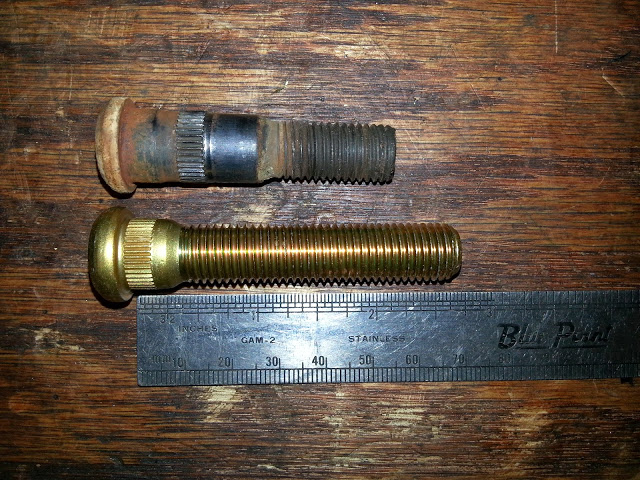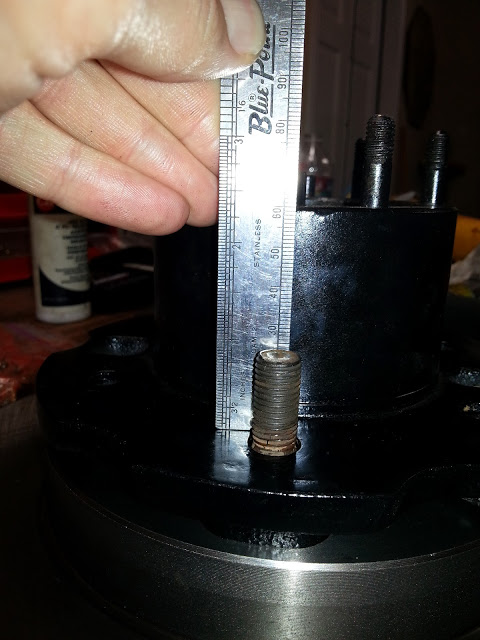I have been doing some research on longer wheel studs for a front disc brake setup. Unless I've just missed the right thread, there is no stud in current production that will work. My goal is to use 1/4" spacers with the American Racing Mojave 17x8 wheel. I've been unable to find any kind of aftermarket stud that has the same shoulder and knurling as the stock Toyota stud without changing over to a SAE style stud.
I had ordered the ARP part #100-7715 without considering the difference in neck styles and found that they do not seat and simply rattle in hole. From what I understand, these work fine in the rear drum brakes (haven't got there yet), but will not seat in the front discs.
My options at this point are:
Stick with steel wheels. (Give up!)
Change out to an SAE stud format. (Two sets of lug nuts to keep up with.)
Don't run the 1/4" spacer. (The wheels will barely clear the V6 rotor and TRE without them.)
I've been thinking about a solution and came up with an idea that might work for myself and others wishing to run alloy wheels with longer studs.
Here's a picture narrative of the problem and the proposed solution:

Stock vs. ARP

So loose it just drops in the hole.

How it should sit when dropped in. (Knurling contacting flange hole)

Stock Length

ARP Length

Length above convex portion of hole with stock lug (no spacer).

Length above convex portion of hole with ARP lug (no spacer).
I have a lot of pictures... continued on next post...
I had ordered the ARP part #100-7715 without considering the difference in neck styles and found that they do not seat and simply rattle in hole. From what I understand, these work fine in the rear drum brakes (haven't got there yet), but will not seat in the front discs.
My options at this point are:
Stick with steel wheels. (Give up!)
Change out to an SAE stud format. (Two sets of lug nuts to keep up with.)
Don't run the 1/4" spacer. (The wheels will barely clear the V6 rotor and TRE without them.)
I've been thinking about a solution and came up with an idea that might work for myself and others wishing to run alloy wheels with longer studs.
Here's a picture narrative of the problem and the proposed solution:

Stock vs. ARP

So loose it just drops in the hole.

How it should sit when dropped in. (Knurling contacting flange hole)

Stock Length

ARP Length

Length above convex portion of hole with stock lug (no spacer).

Length above convex portion of hole with ARP lug (no spacer).
I have a lot of pictures... continued on next post...
Last edited:









